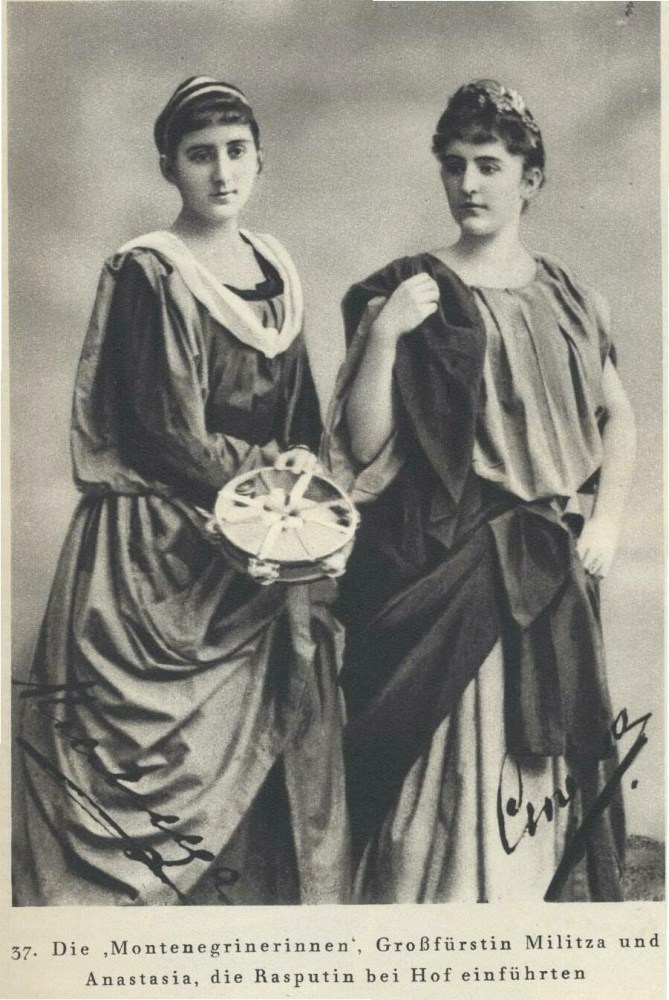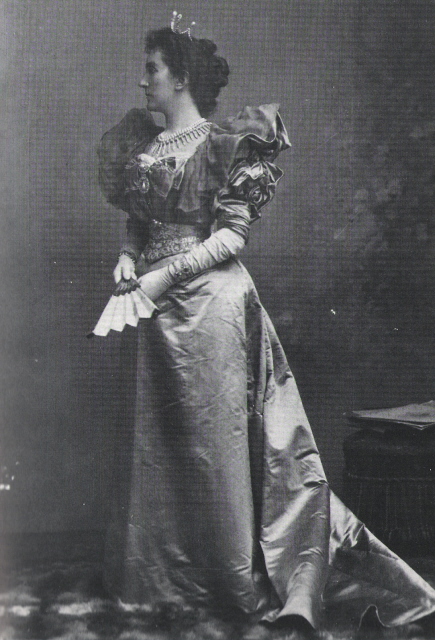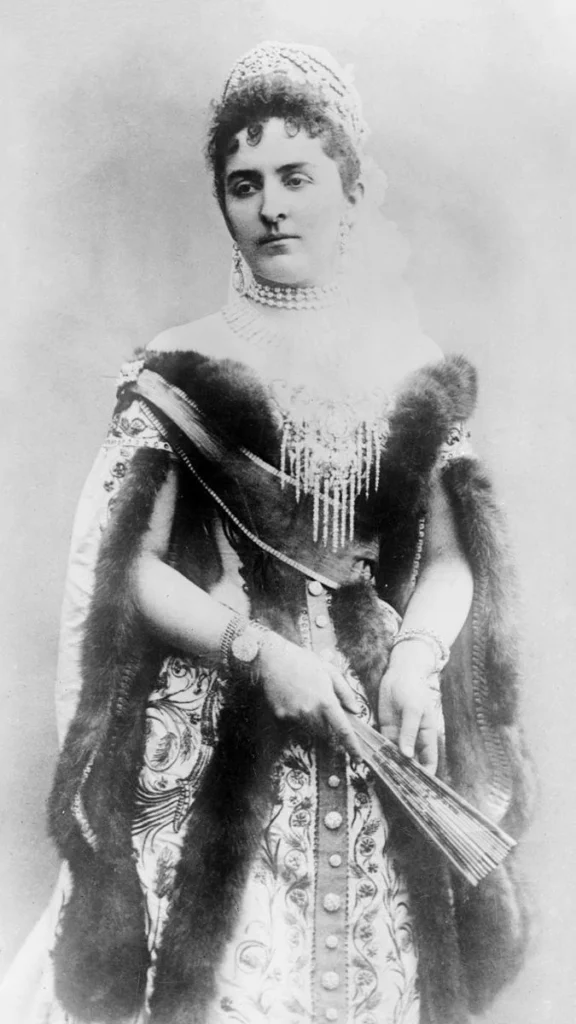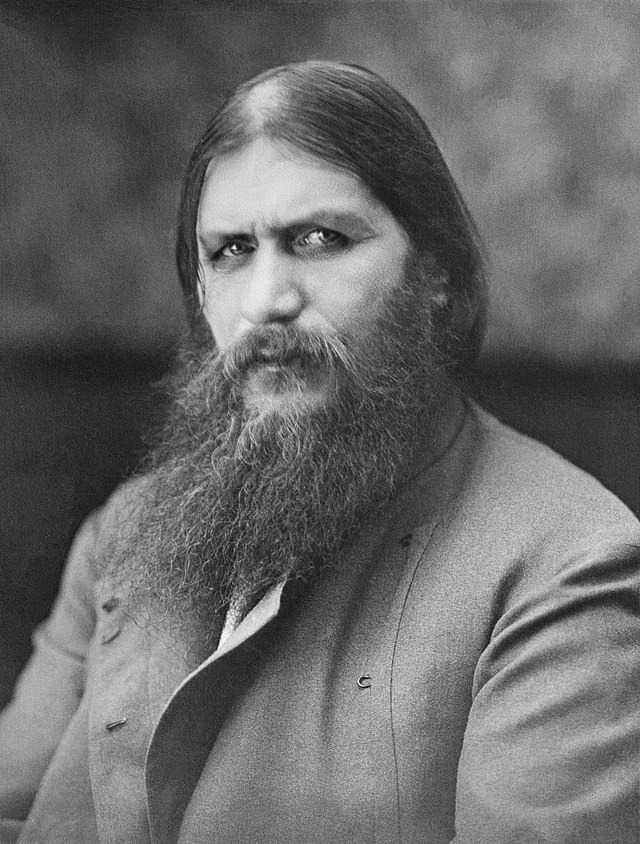In the annals of European royalty, few stories are as captivating as those of Princesses Milica and Anastasia of Montenegro. Dubbed the ‘Black Princesses,’ their lives were a blend of royal intrigue, mystical pursuits, and pivotal roles in the last days of the Russian Empire. Their story, now retold in Imogen Edwards-Jones’ novel “The Witch’s Daughter,”(slated for release on December 7) offers a glimpse into a world where royalty and mysticism intertwined with the fate of nations.

Royal Roots and Mystical Beginnings
In the picturesque landscape of Montenegro, amidst the rugged mountains and ancient fortresses, the story of Princesses Milica and Anastasia began. Born into the Petrović-Njegoš dynasty, a lineage steeped in the lore of warriors and poets, the sisters were destined for a life far beyond the ordinary confines of royalty. Their father, King Nikola I, was a revered ruler, a poet-king who skillfully navigated the complexities of Balkan politics. Their mother, Queen Milena, was of noble descent, instilling in her daughters the virtues of strength and resilience.
From their early years in the royal courts of Cetinje, the capital of Montenegro, Milica and Anastasia were surrounded by an air of mysticism that pervaded the Balkan region. This was a land where ancient traditions and folklore were interwoven with everyday life, where tales of heroes and spirits were as real to the people as the rugged mountains that framed their homeland.

Their education, which began in this land of myths and legends, took a significant turn when they were sent to the Smolny Institute in St. Petersburg. It was here, in the heart of the Russian Empire, that their fascination with the mystical and the occult took root and flourished. The institute, known for its rigorous academic standards and strict discipline, was also a melting pot of ideas and philosophies. For Milica and Anastasia, the exposure to Russian high society and its inclination towards spiritualism and the occult was transformative.
In the salons of St. Petersburg, amidst the whispers of aristocrats and intellectuals, the sisters encountered the world of the mystical with an eagerness that belied their royal upbringing. They were captivated by tales of Eastern mystics, the writings of esoteric philosophers, and the allure of the unknown. Their interests soon expanded to encompass practices like séances, tarot readings, and the study of alchemical texts – pursuits that were both a fascination and, in some ways, a rebellion against the conventional expectations of princesses.
This blend of royal heritage and mystical interests crafted a unique persona for each sister. Milica, the elder, was known for her sharp intellect and strong will, qualities that made her a formidable figure in the mystical circles of St. Petersburg. Anastasia, with her charismatic charm and keen curiosity, was equally adept at navigating the complex social networks of the Russian aristocracy.
Their lives, thus far framed by the intersection of royal duty and mystical pursuit, were setting the stage for a future that would see them play pivotal roles in the highest echelons of Russian society. Little did they know, their foray into the mystical would soon intertwine their fates with one of the most enigmatic figures in Russian history – Grigori Rasputin. Their journey from the mountainous landscapes of Montenegro to the gilded halls of St. Petersburg was just the beginning of a story that would leave an indelible mark on the pages of history.
Strategic Alliances: The Montenegrin Princesses’ Foray into Russian Nobility
The tale of Princesses Milica and Anastasia of Montenegro weaves into the grand tapestry of European politics through marriages that were nothing short of strategic masterpieces. These unions weren’t just about love or alliance; they were a chess game that placed the sisters squarely in the midst of Russian aristocracy and power.
Princess Milica: A Marriage of Influence and Power
Princess Milica’s marriage to Grand Duke Peter Nikolaevich of Russia was a union that resonated far beyond the walls of the chapel. Grand Duke Peter, a towering figure in Russian nobility, was deeply intertwined with the Romanov family. This marriage in 1889 was not just a joining of hearts but a symbol of the burgeoning alliance between Montenegro and Russia, two nations bound by Slavic brotherhood and Orthodox faith.
Milica’s new role in the Russian court was marked by her keen intelligence and strong will. She was not a princess to stay behind the curtains; her influence grew as she navigated the complex social and political landscapes of the Russian Empire. With her marriage, she brought Montenegro’s presence into the heart of Russian politics, creating a bridge between her homeland and her adopted country.
Princess Anastasia: Love, Loss, and Power
Princess Anastasia’s marital journey was a tale of love, heartbreak, and ultimately, power. Her first marriage to Duke George Maximilianovich of Leuchtenberg in 1889 brought her into the Romanov fold. However, this union, marked by the Duke’s frequent absences and later their divorce, was just the prelude to her more politically significant second marriage.
Her second marriage to Grand Duke Nicholas Nikolaevich of Russia, a prominent military leader, in 1907 was a union that would further elevate her status. This marriage, somewhat controversial due to its nature (the Orthodox Church frowned upon the marriage of a widow to the brother of her sister’s husband), was a testament to Anastasia’s resilience and her ability to navigate the upper echelons of Russian society. She became a figure of intrigue and fascination, often seen at the forefront of the Russian court’s social events.


The Sisters’ Role in Russian Aristocracy
Together, Milica and Anastasia represented a formidable duo in the Russian aristocracy. Their marriages were not mere personal choices but strategic moves that positioned them as influential figures in one of the world’s most powerful empires. They wielded their influence with a blend of Montenegrin fortitude and Russian sophistication, becoming key players in the social and political scenes of St. Petersburg.
These marriages were more than just a joining of royal families; they were a confluence of cultures, politics, and personal ambitions. Milica and Anastasia, through their marriages, became bridges between Montenegro and Russia, influencing not only their immediate families but also the broader course of European history.
In their new roles, they brought a touch of Montenegrin mystique to the Russian court, a move that would later play a pivotal role in one of the most intriguing episodes of Russian history – the introduction of the mystic Rasputin. The sisters, now firmly entrenched in Russian aristocracy, were about to embark on a journey that would forever alter the course of an empire.
The Arrival of the Princesses and the Flourishing of Mysticism
Upon their entry into the Russian aristocracy through strategic marriages, Milica and Anastasia brought with them a profound interest in the mystical arts. By the early 20th century, their influence was palpable in the court of Tsar Nicholas II. The sisters were renowned for their keen involvement in spiritualism, a trend that was sweeping through Europe at the time. They hosted salons and gatherings where discussions on mysticism, spiritualism, and the occult were not just common but celebrated.
Introducing Rasputin: A Pivotal Moment
The year 1905 marked a turning point in Russian history, largely catalyzed by the sisters. It was Milica and Anastasia who introduced Grigori Rasputin, a Siberian peasant and mystic, to Tsar Nicholas II and his wife, Tsarina Alexandra. Rasputin, known for his supposed healing abilities and prophetic insights, quickly gained the favor of the Tsarina, particularly for his alleged ability to alleviate the suffering of her son, Alexei, who was afflicted with hemophilia.

Rasputin’s Ascendancy and the Sisters’ Influence
Rasputin’s rise to prominence within the Russian court was meteoric. By 1911, his influence over the royal family, particularly the Tsarina, was a subject of widespread speculation and concern among the aristocracy and the general public. The princesses’ role in introducing Rasputin would forever link them to his controversial legacy. Documents and correspondence from the time, including letters from the royal family, underscore the depth of Rasputin’s influence, much of which can be traced back to the sisters’ initial endorsement.
After escaping the Bolshevik Revolution, Princess Milica and her husband, Grand Duke Peter Nikolaevich, found refuge in France. The Grand Duke’s death in 1931 marked a profound turning point in Milica’s life. She spent her subsequent years in the south of France, away from the public eye.
From Yalta in the Crimea, Anastasia and her husband escaped Russia in 1919 aboard a British battleship, HMS Marlborough. They settled briefly in Italy, living with her sister Elena, Queen of Italy and later in France.
These Montenegrin princesses not only carved an indelible niche in the annals of Russian history, but their influence and fortitude also played a pivotal role in shaping the European political landscape of their era. Their legacies continue to echo through the corridors of time, serving as a testament to the profound impact individuals can have on the course of history.




